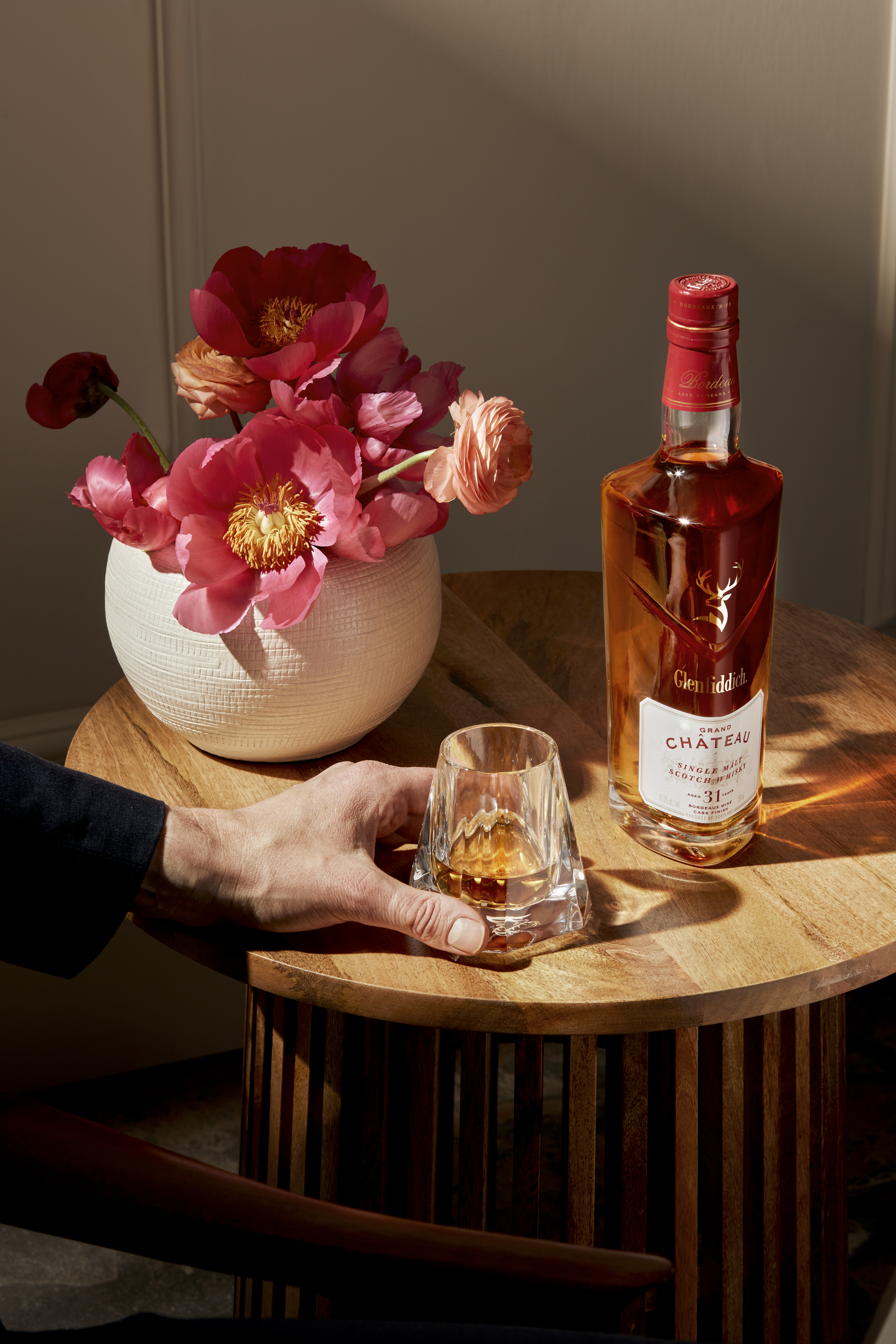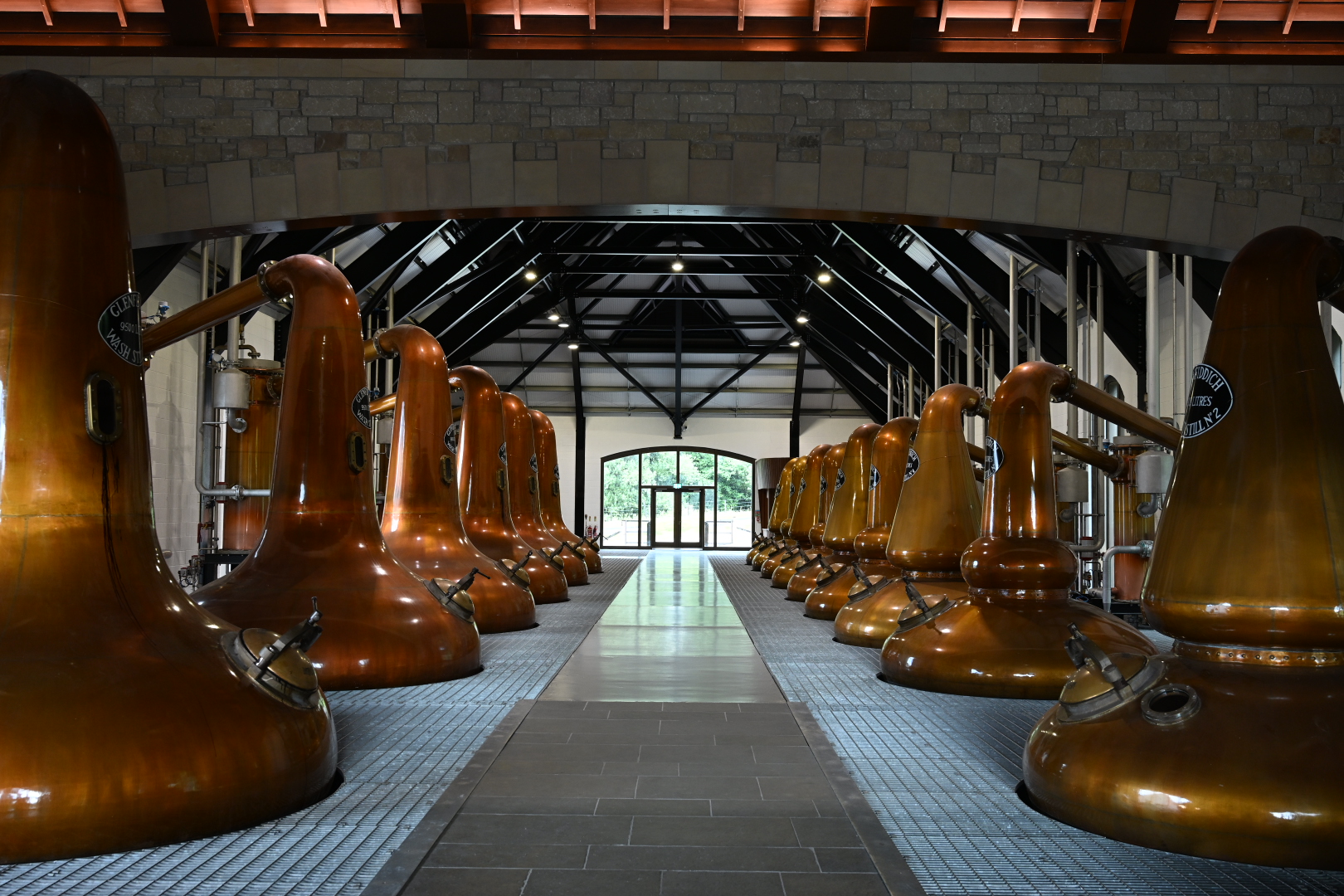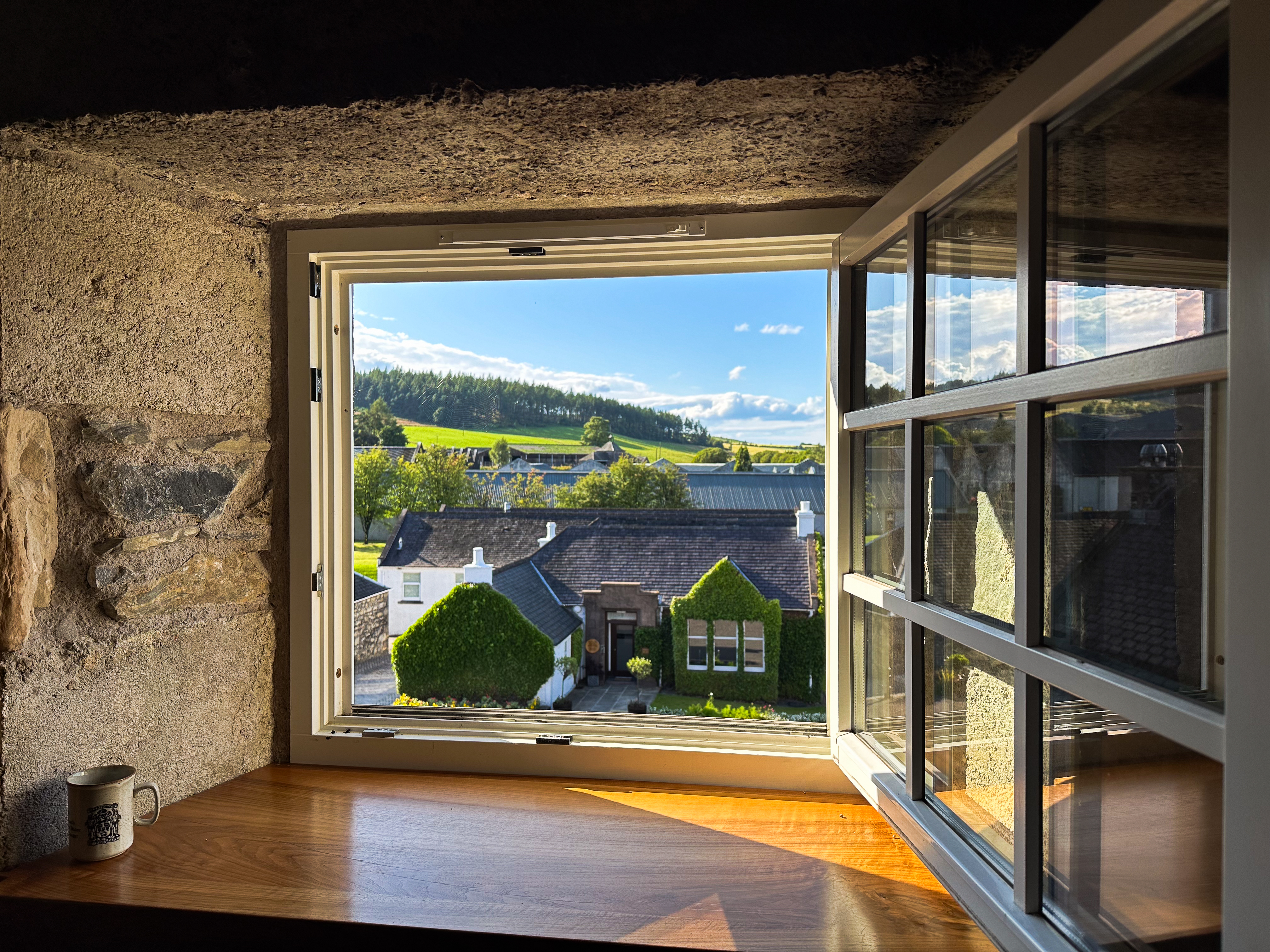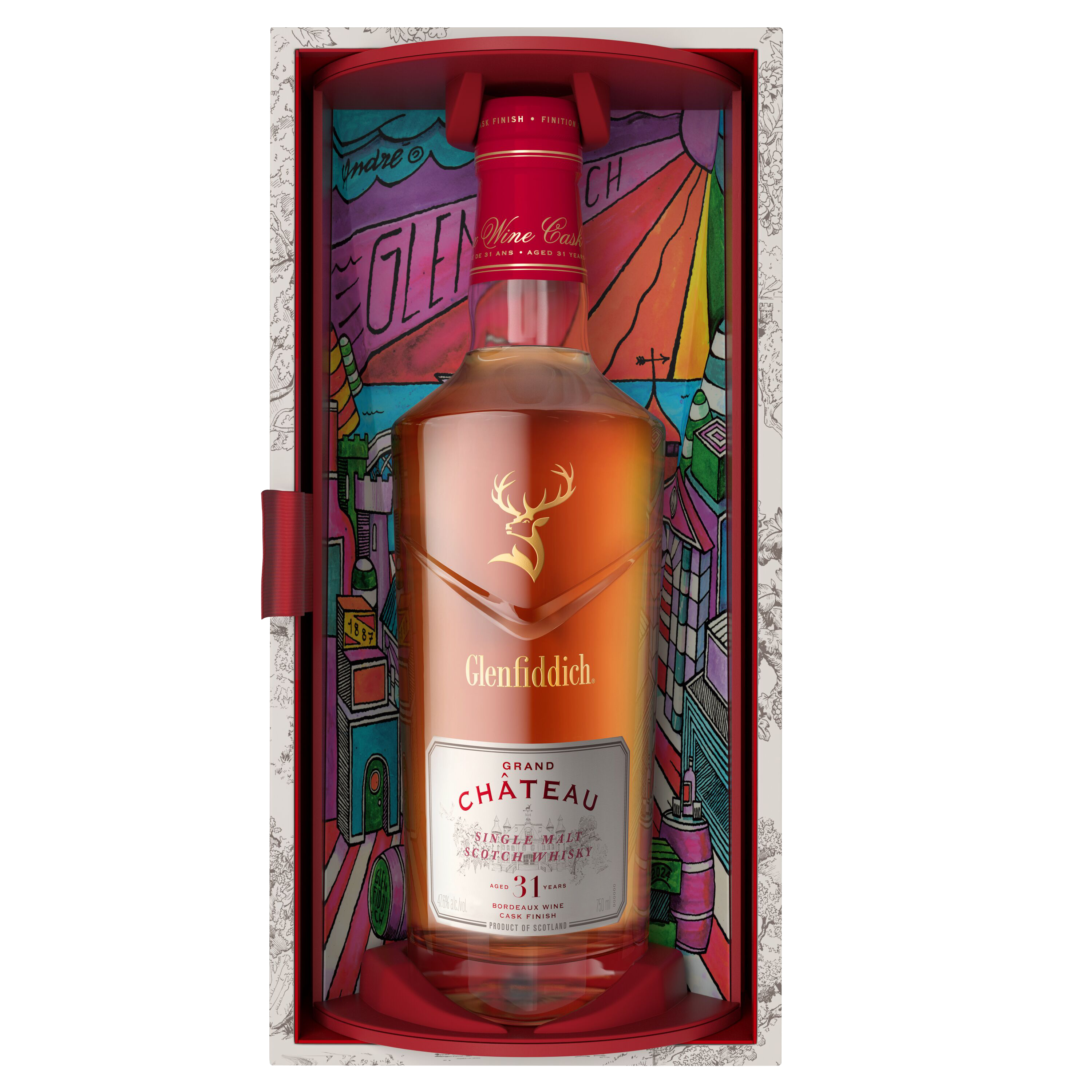This 31-Year-Old Glenfiddich Single Malt Scotch Was Finished In Bordeaux Wine Casks
“We don’t make it because it’s profitable. We make it because we can.”

Glenfiddich’s Grand Series of luxury whiskies are defined by their combination of the very oldest and finest single malt whiskies in the distiller’s inventory with cask finishes that bring in flavors from other cultures—like ex-Awamori casks from Japan, or in this case, French Bordeaux wine casks.
I traveled to the Glenfiddich distillery in Speyside, Scotland’s whisky heartland, to taste the new Grand Château in the very warehouse where whisky was aged. Matured for a total of 31 years, the single malt spent 22 years in American oak casks and then nine years in the French oak Bordeaux casks where they gained new vibrance, a richer flavor, and a long and elegant finish.

With red wine notes overlaying what is already a rich and extraordinary classic single malt, Grand Château delivers a wide flavor profile that ranges from vanilla to slightly savory oak, spice, and nuttiness, into a spectrum of bold, fruity aromas and hints of ripe, dark berries. Unquestionably indulgent, the Bordeaux influence has the added benefit of allowing it to pair beautifully with food. While wine-cask finishing is popular in whisky making, finishing in Bordeaux casks specifically is rarer.
“Knowing when Grand Château was ready was just a gut feel,” says Brian Kinsman, Master Blender at William Grant & Sons, Glenfiddich’s family-owned parent company. Kinsman has a background in chemistry but says that while the scientific part of the process is important, knowing when a whisky is right is more about gut factors like smell and feeling. He was already in his current role when the Bordeaux casks first became available, in the kind of “momentary opportunity in time” he says makes for the most unique whiskies. Kinsman says he was not looking for the casks when the opportunity crossed his path.

“We started looking at the casks, speaking to the coopers, nosing them, and thinking what might work,” says Kinsman, calling it one of the “little serendipitous moments” that he is constantly on the lookout for. “There was never a master plan,” he says, “because it genuinely started as an experiment and then it goes on for years, and then you eventually make that gut decision that ‘This feels like a pretty damn good whisky to bottle.’”
Making this choice of when to bottle is always “an educated guess,” says Kinsman, and “The older that it gets, the more important it is that your guess is right.” For whisky this mature, every one of the casks in Grand Château was one he knew. That’s because while he can’t check every cask of younger whiskies, for those that stick around long enough, “gradually every cask becomes known to us, and you say, that one feels like a vintage.”
When a fellow journalist pointed out that selling a 31-year-old Scotch is not nearly as profitable as selling two 15-year-old batches back to back, a Grant family member who joined us for the tasting quipped back with a grin: “We don’t make it because it’s profitable,” said Kirsten Grant Meikle, a fifth-generation family member. “We make it because we can.”

This point, for Kinsman, is one of the best perks of working for a family-owned company. “The ability to not worry about the bottom line is huge,” he says. “Economically, it doesn’t always make sense, but if it’s the right thing to do, we’ll do it.”
Knowing when to bottle a whisky this special is Kinsman’s domain, but when it came to choosing a bottle worthy of it, Glenfiddich partnered with artist André Saraiva to create two limited-edition packages for Grand Château. One has a bright and whimsical watercolor print inside the box, and the other (limited to just 24 available in the U.S.) are “Artist Editions” with the artist’s signature motifs on the outside of the box. $2,100
